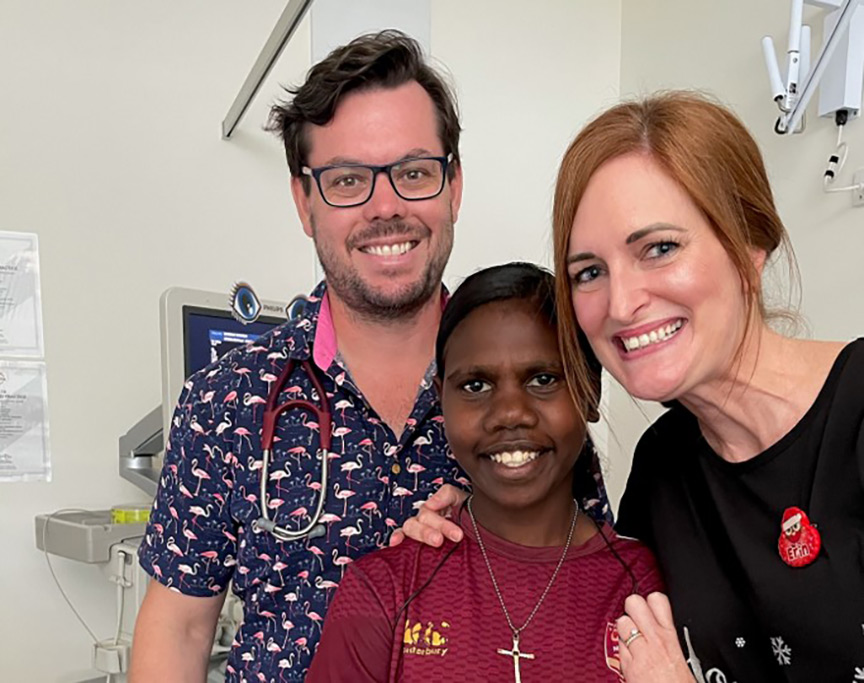
Aboriginal and Torres Strait Islander children and young people needing heart surgery will help co-design a model to ensure more timely and culturally safe care closer to home.
The Bridging the Heart Gap pilot was the brainchild of the Queensland Children’s Hospital (QCH) cardiac surgical team, that noticed a disconnect and often distressing experience for First Nations families, travelling to major city centres for cardiac care.
Through partnering with community leaders in remote Far North Queensland to deliver vital telehealth services prior to admission, the program pilot in 2023 built trust with 12 families while they were still on country in their local communities, to ease the transition to cardiac care at the QCH in Brisbane.
QCH Director of Cardiac surgery Prem Venugopal said: “Prior to the program, we were taking children away from their home to a completely alien environment, they were meeting new people, and having this invasive and often daunting procedure.”
Approximately 15 per cent of cardiac patients at the QCH identify as Aboriginal or Torres Strait Islander, with 40 per cent of these children and young people from Far North Queensland.
The success of the Bridging the Heart Gap pilot prompted additional funding from the Medical Research Future Fund (MRFF) – close to $2million over the next three years - to allow Dr Venugopal and his team to expand the program. They’ll continue to work with patients and their families in remote communities of Queensland and Western Australia and create a culturally appropriate model of care.
Children’s Health Queensland and University of Queensland Professor Amanda Ullman will play a key role in the research component of the program, with the hope of creating a sustainable health care model, that could be used by all service areas to increase health equity with First Nations children, young people and their families.
Professor Ullman said: “The first phase is about co-design and having these conversations with community, developing this partnership and toolkit of resources to ensure health services are redesigned to better meet the individual needs of Aboriginal and Torres Strait Islander families.”
The program has been vital for patients like 18-year-old Monique from Mareeba in Far North Queensland, with rheumatic heart disease.
Dr Venugopal said: “Monique was completely terrified. She would just curl herself into a ball every time we went to approach her for surgery, and she'd come up with all sorts of excuses for not going to theatre.”
The QCH cardiac team worked with community elders and Monique’s local clinicians paediatric cardiologist Ben Reeves and paediatric rheumatic heart disease nurse Erin Ferguson (pictured) to gain her trust and understanding. Not only did this communication help facilitate vital surgery, but Monique is now also hopeful of pursuing a career as a nurse, in the health system she once feared and resisted.
Dr Venugopal said: “We realised trust doesn’t happen when they arrive at QCH, it has to begin while they’re on country, and working with local clinicians who the children and young people have an existing relationship with.”
The expansion of Bridging the Heart Gap program will take place in Queensland and Western Australia over the next three years and allow the clinical and research team time the create the co-designed model, implement then evaluate its success for further development.